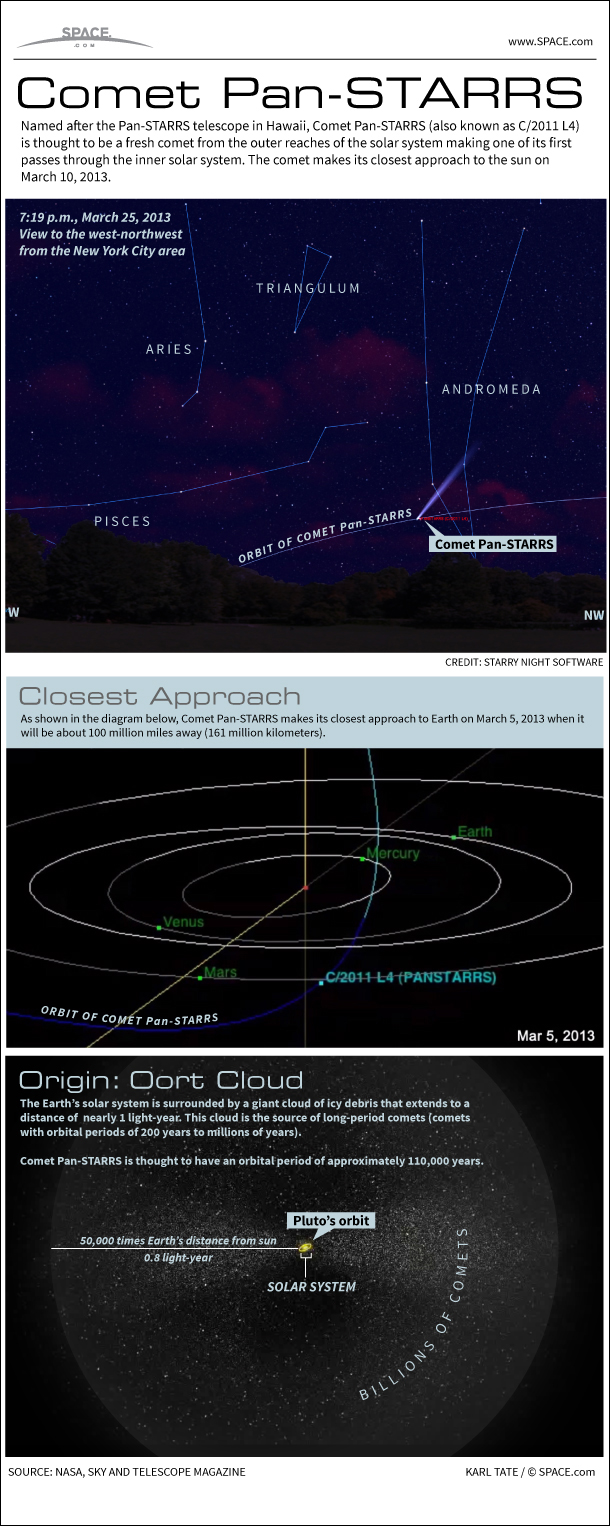Comet Pan-STARRS in Night Sky Explained (Infographic)

Named after the Pan-STARRS telescope in Hawaii, Comet Pan-STARRS (also known as C/2011 L4) is thought to be a fresh comet from the outer reaches of the solar system making one of its first passes through the inner solar system. The comet makes its closest approach to the sun on March 10, 2013.
In March, the comet is seen in the western sky around sunset in the northern hemisphere.
Comet Pan-STARRS makes its closest approach to Earth on March 5, when it will be about 100 million miles away (161 million kilometers).
The Earth's solar system is surrounded by a giant cloud of icy debris that extends to a distance of nearly 1 light-year. This cloud is the source of long-period comets (comets with orbital periods of 200 years to millions of years).
Comet Pan-STARRS is thought to have an orbital period of approximately 110,000 years.
Astronomers first spotted the comet in June 2011 with the Panoramic Survey Telescope & Rapid Response System (Pan-STARRS) telescope, in Hawaii.
The comet will be seen very close to the horizon during its week of closest approach to the Earth and sun. Later in the month the comet will be visible higher in the sky as it speeds away from the sun, growing dimmer with distance.
- Amazing Photos of Comet Pan-STARRS
- How To Spot Comet Pan-STARRS In March 2013 | Video
- Comets: Formation, Discovery and Exploration
Follow us @Spacedotcom, Facebook or Google+.
Join our Space Forums to keep talking space on the latest missions, night sky and more! And if you have a news tip, correction or comment, let us know at: community@space.com.
Get the Space.com Newsletter
Breaking space news, the latest updates on rocket launches, skywatching events and more!

Karl's association with Space.com goes back to 2000, when he was hired to produce interactive Flash graphics. From 2010 to 2016, Karl worked as an infographics specialist across all editorial properties of Purch (formerly known as TechMediaNetwork). Before joining Space.com, Karl spent 11 years at the New York headquarters of The Associated Press, creating news graphics for use around the world in newspapers and on the web. He has a degree in graphic design from Louisiana State University and now works as a freelance graphic designer in New York City.
